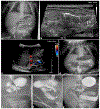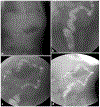Neonatal gastrointestinal emergencies: a radiological review
- PMID: 35249799
- PMCID: PMC8976780
- DOI: 10.1016/j.arcped.2022.01.016
Neonatal gastrointestinal emergencies: a radiological review
Abstract
Background: Abdominal emergencies in neonates require surgical management in almost all cases and complications may include bowel perforation, sepsis, shock, and even death. Radiological imaging has become a very important aid in the clinical setting as it shortens time to diagnosis.
Objective: The objective of this review is to discuss the more prevalent neonatal gastrointestinal emergencies, review appropriate imaging options, and illustrate common radiological presentations of these entities.
Conclusion: Despite advancements in imaging techniques, it is important to keep in mind that neonates have a higher susceptibility to the adverse effects of ionizing radiation, and therefore radiography and ultrasonography remain the main diagnostic modalities for ruling out the diseases with the worst prognosis. Other modalities (fluoroscopy, computed tomography, and magnetic resonance imaging) may have limited use in very specific conditions. All providers in an emergency department should be familiar with the basic radiological findings that may indicate a gastrointestinal emergency, especially in health institutions that do not have 24-h radiologist coverage.
Keywords: Abdominal emergencies; Gastrointestinal emergencies; Neonatal imaging; Pediatric radiology; Radiology.
Copyright © 2022 French Society of Pediatrics. Published by Elsevier Masson SAS. All rights reserved.
Conflict of interest statement
Conflict of interest statement None declared.
Figures














References
-
- Louie JP. Essential diagnosis of abdominal emergencies in the first year of life. Emerg Med Clin North Am 2007;25:1009–40 vi. - PubMed
-
- Argyropoulou MI, Hadjigeorgi CG, Kiortsis DN. Antro-pyloric canal values from early prematurity to full-term gestational age: an ultrasound study. Pediatr Radiol 1998;28:933–6. - PubMed
-
- Hiorns MP. Gastrointestinal tract imaging in children: current techniques. Pediatr Radiol 2011;41:42–54. - PubMed
Publication types
MeSH terms
Grants and funding
LinkOut - more resources
Full Text Sources
Medical

